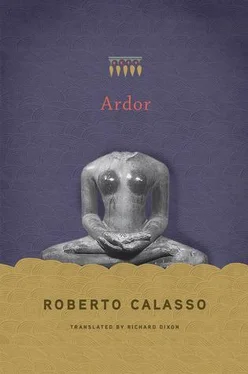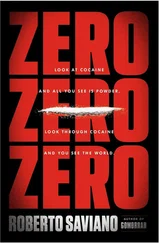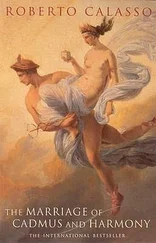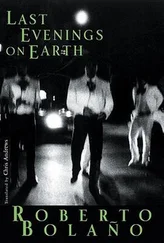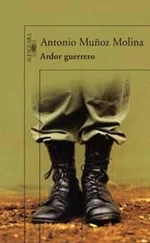It is a delightful irony that Marcel Mauss, at the beginning of his academic career, was appointed to the Chair of History of Religions of Uncivilized Peoples. And already on the eighth line of his inaugural lecture the new professor declared, stressing the words in italics: “Uncivilized peoples do not exist.” Mauss had been appointed to teach a subject that he declared did not exist.
Thirty years later, at the beginning of a course at the Collège de France, Mauss would go as far as not only avoiding all reference to that annoying expression “uncivilized,” but also abolishing a more obstinate word: primitive. Explaining: “All the rest of humanity, who are called primitive and are still living, deserve instead the name archaic.” Having cleared away those ungainly remnants of the positivistic and progressive vision, it remained to be seen what dignity and power of thought was to be given to the archaic. For even the archaic could be considered a crude rehearsal for something to come or as a chaotic repertory upon which, having become compos sui , history would later draw. This is how Durkheim explained his interest in studying religion, which he would otherwise have been embarrassed to admit — and he said it in the true manifesto of the French school of sociology, the 1898 Preface to the Année sociologique : “Religion contains within itself, from the very beginning, though in a confused state, all the elements that, in dissociating themselves, in determining themselves, in combining themselves together in a thousand ways have given birth to the different manifestations of collective life.” Underlying Durkheim’s words, and very difficult to erode, is the conviction that the complex is explained through the simple, the superior through the inferior, the perfect through the imperfect. If there is a dogma people today are not prepared to do without, it is precisely this one. It needed the lucidity of Simone Weil to throw sand — a deadly sand — into the workings of that speculative machine: “The imperfect proceeds from the perfect and not the other way around.”
* * *
Hidden among the reports of the Annuaire de l’École Pratique des Hautes Études —usually put together as a pensum to explain the academic curriculum — a few words announce the fact that, for the 1934–1935 course, “the Director [Mauss] has managed to procure White’s Ancient History of the Maori (six volumes plus one volume of plates),” and so lectures were to be dedicated to the study of Maori cosmology. Some highly revealing words then followed, despite the limited importance of that publication: White’s work contained “one of the most coherent bodies of cosmogonic myths that we know.” For example, the Tiki cycle, “macrocosm and microcosm, great male god, phallus and fetus, creator of All,” is now presented as being “most important and best coordinated, and in the end almost better documented than any other cycle of any other known mythology.” A statement brimming with implications. What was glimpsed here was a Copernican upheaval: no longer was it a question of Egyptian, Greek, Mesopotamian, or Vedic mythology offering opportunities for understanding certain aspects of rudimentary and obscure Maori mythology, but — on the contrary — perhaps the immense and well-articulated corpus of Maori mythology was capable of holding within itself the mythological systems of more advanced civilizations, as particular examples and extensions. And even arranging them indeed in their proper place , as part of an ordered sequence. Or at least this seems to be the implication of an extremely bold sentence: “All the themes of the great ancient cosmogonies have found their logical place there.”
Words that were enough to explode the basic assumptions of anthropology, then and now. Here the mythologies are presented as one single tree — a tree-forest, consisting of countless other trees, arranged in logical and consequential relationships with each other. And the closest possible approximation, in seeking to perceive this tree-forest to its full extent, would be found in the evidence of Maori mythology. So New Zealand, always cited as an example of a lost island, a place unconnected with advanced civilizations, would be the place to which some of the greatest mythological and cosmological systems could be traced, as if to a matrix. Mauss could in no way publicize this idea, since it would certainly have caused problems with his colleagues. But he must have thought about it very often: the figure of Tiki and of the tikis —of the god and of the jade pendants that depict him — continued to appear in his papers, including one of 1937–1938 now lost.
Mauss always used rather fewer words than the required minimum. And so his declaration on Tiki and tikis is like the outline for an essay. He could have developed it more or less along these lines: mythology is a particular and irreducible modality of knowledge. Its materials are pictures, stories, and combinations of them, in the same way that Newtonian science is a particular modality of knowledge that uses numbers, functions, methods of calculus as its materials. But, unlike Newtonian science, which is practiced every day, mythology is something that has fallen into disuse. Its images, its history have become “empty words.” What, then, is the anthropologist’s task? Exoterically: to investigate the inextricable link between all living forms and the society that holds them, obeying one single principle: “Myths are social institutions.” An easy task, that Mauss was able to perform brilliantly. Yet at the same time he used it as a cover for what was most important to him: an esoteric inquiry that sought to trace the elements of that lost knowledge found in the evidence of scattered fragments of mythologies, rites, and systems of correspondences. This time it was an extremely difficult, almost hopeless, task. It drove Mauss to make sad admissions: “We are still at the stage of preparing the materials of a mythology and very often we are only in a position to demonstrate that the myths are social phenomena.” At this point, Mauss found himself doing two jobs: on the one hand, that of a strict scientist of society —this all-embracing entity that had never before been studied in all its ramifications; on the other, that of a shaman or medicine man of an extinct tribe, trying to reconstruct its doctrines step by step. And it is through this very superimposition of roles that Mauss’s work still transmits a secret energy that anthropology itself, in its various schools and branches, seems to have lost.
Mauss could also be brusque when discussing Tiki. What could the West offer, in comparison? Hesiod’s Theogony. But if the two texts were put side by side, what would be the result? “Comparisons have been made with Hesiod’s Theogony. The Maori version (and the Polynesian version in general) appears more coherent, better developed, closer to living institutions than that sort of Greek compilation.” What effrontery … Not only are the Maoris and the Greeks presented on the same footing. But here indeed the crude, formless text is Hesiod’s — or “that sort of compilation” which is passed off under his name. It was a subversion of Wilamowitz’s conception of classical antiquity, a liquidation of all claim to European hegemony in matters of the spirit. But where was this epoch-making event declared? In Mauss’s (half-page) course summary for the year 1937–1938, describing “relations between certain games and certain ancient cosmologies” in the Annuaire du Collège de France. Not many people noticed it.
If, in digging out the ground for the altar, there was already a fear of hurting the land and its creatures, the killing of animals must have seemed horrific.
Читать дальше
